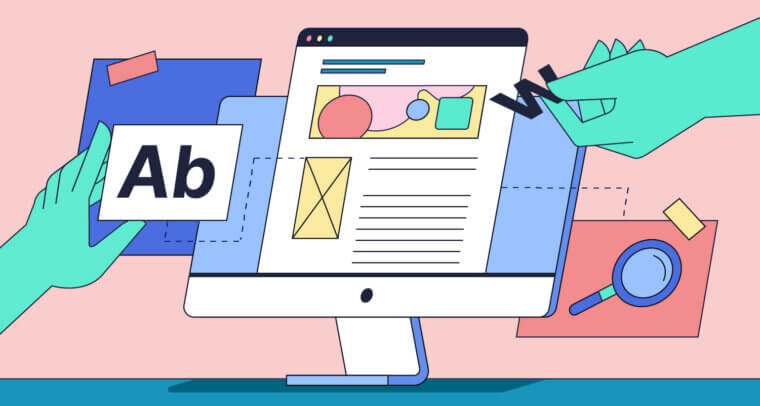Lesson 3: Block Organization Method & Conclusion
Estimated Time: 30 minutes
Lesson Objective: At the end of this lesson, you will be able to use the block structure to compose a compare-and-contrast essay

Block Organization and Conclusion
In the previous lesson we learned how to write a compare-and-contrast essay using the point-by-point method. Now we will discuss the other mode of organisation, the block structure. With block structure, you will need to separate the body of your compare-and-contrast essay into two parts. The first part of the body paragraph will be dedicated to comparison A, while the other half will be centered around comparison B. Together with the introduction and the conclusion, the overall essay length will be four paragraphs. We will use the same essay topic as before; “Describe the differences and/or similarities between participating in a in-person class versus taking an online class”.
So, using block structure our essay will take the following form:
I. Introduction
- Hook
- Background information
- Thesis statement: How students are educated in traditional in-person classes and online classes is quite different when you consider convenience, interactions, and type of learner.
II. Body paragraph 1: Studying in a traditional in-person class
- Conveniences:
- Going to school every day leads to transportation fees and adds to student fatigue
- Inflexible scheduling means you may have to put off appointments
- Interactions:
- Books and classroom notes are very useful for studying and passing exams
- Able to share their views with the teacher in person and getting their questions answered right away
- Learners
In-person classes are more suitable for young children, teenagers and young adults who are yet to join the workforce
III. Body paragraph 2: Studying in an online class
- Conveniences:
- It saves valuable time, money and energy
- Take a course from the comfort of their office or home
- Interactions:
- Reduce the amount of books one has to read
- Offer alternatives to live query resolution using online forums, emails, and chatrooms. The negative is that it may take time to get the answers
- Learners:
- Employees who need professional level courses to increase their qualifications and enhance their career opportunities
IV. Conclusion
- Restated thesis statement
- Summary of the comparison: traditional in-person classes versus online classes
- Final thoughts
Using block structure, traditional in-person classes are explained in detail in the first body paragraph. In the second body paragraph, we take a similar approach only this time we focus on online classes. In both of the body paragraphs, it is very important that the points of comparison follow the same order as they were presented in your introduction paragraph.
Conclusion
And finally let’s discuss a bit about crafting your conclusion in compare-and-contrast essays. As you know very well, a concluding paragraph is your chance to remind the reader of your thesis. Thus, your conclusion paragraph should start by restating it in a clear and easy to understand fashion. By paraphrasing your thesis statement, you will remind the readers of your main points and explain why you believe your thesis is correct. This is a great way to make sure that the reader really understands the purpose of your paper! For that reason, it is very important that you don’t rush through your conclusion just so you can say you are finished. Remember, your conclusion is that last thing your reader is going to read so take your time and don’t cut any corners.
